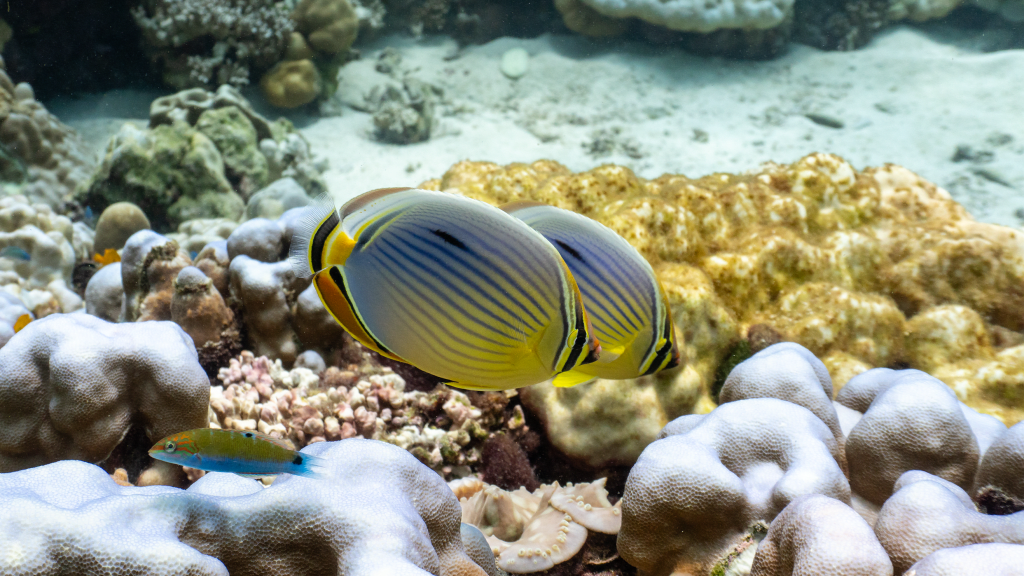Melon butterflyfish

The Melon butterflyfish (Chaetodon trifasciatus) is a bright and colorful fish, typically reaching a length of up to 15 cm. It has a laterally compressed body, characteristic of butterflyfishes (Chaetodontidae). The body is primarily yellow with a series of vertical blue lines. [Note: Lines are often described as diagonal/oblique]. It has three distinct black bands: one running through the eye, another just behind the head, and a third at the base of the tail. [Note: Band description may differ from standard identification features]. The dorsal fin is continuous and shares the same color pattern. Its striking appearance makes it easily recognizable among reef fish.
The Melon butterflyfish inhabits the tropical waters of the Indian Ocean, from the east coast of Africa to the islands of the central Indian Ocean. It predominantly populates coral reefs, often found at depths ranging from 1 to 20 meters. These fish prefer areas with abundant coral growth, which provide them with food and shelter.
The Melon butterflyfish reproduces through external fertilization. During the breeding season, males and females perform courtship dances. The female releases eggs into the water column, which are then fertilized by the male. The eggs are pelagic, floating in open water until hatching. The larvae go through a planktonic stage before settling on the reef and transforming into juveniles.
The diet of the Melon butterflyfish primarily consists of coral polyps, making them corallivores. They feed on the soft tissues of corals, particularly preferring Acropora and Pocillopora species. They also consume small invertebrates and algae as supplements to their diet.
They are known for their shy and peaceful nature. Although they may approach divers out of curiosity, they pose no threat.

